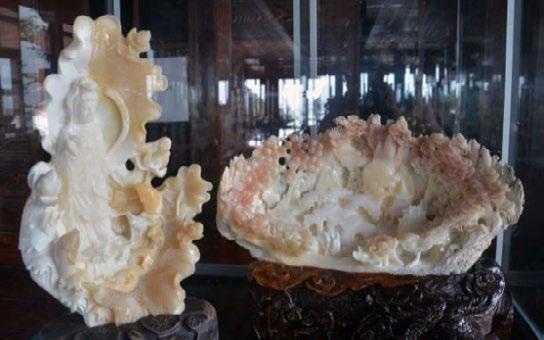25
SMUGGLING ROUTES AND METHODS Almost half of the reported seizures (20 cases) involved the smuggling of raw giant clam shells or shell products into China. Six of these cases were smuggled by air transport, either as air cargo or hand-carried in passenger luggage; five cases were reported to be smuggled by boat or ship, including two cases that were hand-carried in the luggage of cruise ship passengers; four cases used vehicles to smuggle products across land borders; and three cases were detected in international postal parcels. In two cases the transportation method was not specified.
Only a few smuggling cases showed clear links to locations outside of China. Of these, six cases were linked to Vietnam, two to Japan, and one to the Philippines. While these cases may provide some indication of potential entry points and smuggling routes of giant clams into China, at this stage they are too few and small to be considered meaningful.
Image 13: Giant clam shells are unloaded from a boat in Tanmen, Hainan province, April 2013. Credit: Chen Xuelun/IC.
Figure 5: Smuggling methods of raw giant clam shells or shell products into China from January 2016 – July 2021.
Only two cases comprised substantial volumes of contraband. In July 2018, a shipment of 2,094 raw giant clam shells was seized from a Chinese fishing vessel at Tanmen fishing port, Hainan province. The boat captain had allegedly seized the contraband from a Vietnamese vessel that had been intercepted at Xisha North Reef in the South China Sea, with the intention of selling the shells in Tanmen. The case was prosecuted













